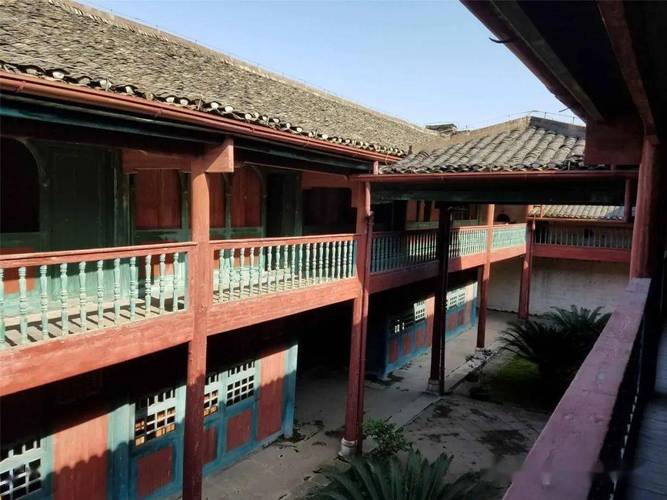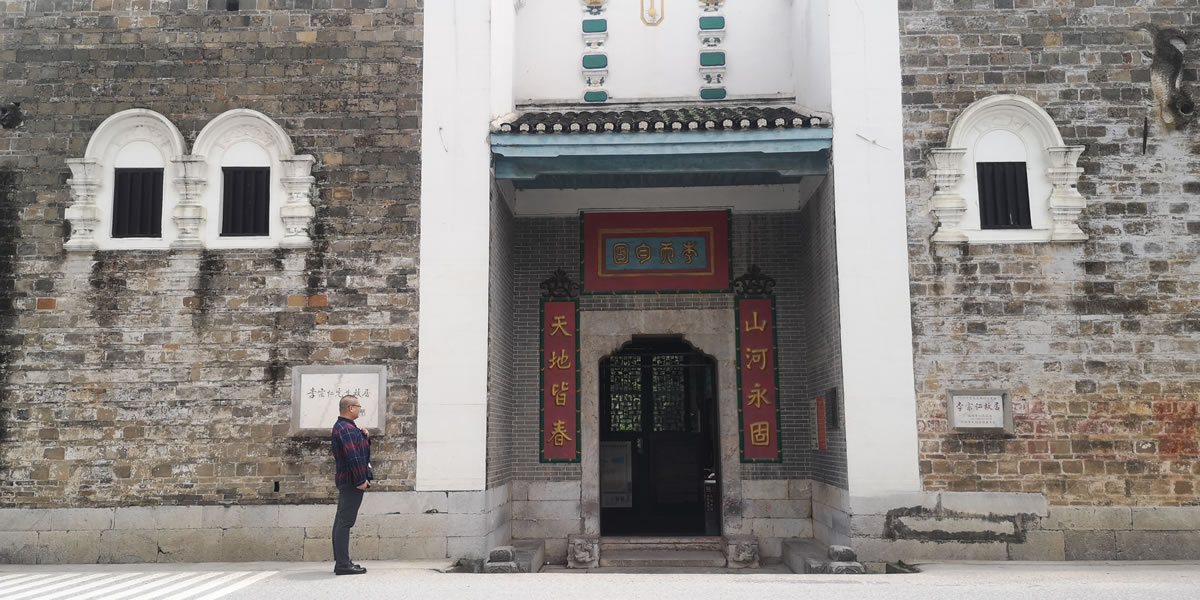Li Zongren's Former Residence
Li Zongren's Former Residence is located at the foot of Tianma Hill in Langtou Village, Liangjiang Town, Lingui District. Constructed during the late Qing Dynasty and the early Republican period, this architectural marvel stands as a testament to the fusion of tradition and modernity, embodying the elegance of a quintessential Northern Guangxi manor while subtly incorporating Western architectural elements.

The residence itself is a quintessential example of a siheyuan, or quadrangle courtyard, featuring a meticulously designed wooden structure. The complex is composed of several distinctive sections: Anle Hall, General's Residence, Academy, Triple Entry Guest Hall, and a watchtower. Each of these components not only reflects the architectural ingenuity of the era but also whispers tales of the historical figures who once walked its corridors.

One can imagine the grandiose ambiance of Anle Hall, where Li Zongren's mother, Madame Liu, spent her later years. The hall, with its intricate woodwork and expansive layout, exudes a sense of serene dignity, offering a glimpse into the life of a woman who played a pivotal role in shaping the man who would become a key figure in Chinese history.
The General's Residence, with its imposing presence, speaks volumes about Li Zongren's stature and the respect he commanded. This section of the residence is a harmonious blend of Chinese architectural principles and Western influences, symbolizing the transition of China from a feudal society to a modern republic.
The Academy, another integral part of the residence, stands as a beacon of learning and enlightenment. It was here that Li Zongren, along with other intellectuals of the time, engaged in discussions and debates that would shape the future of the nation. The Academy's design, with its open courtyards and airy rooms, reflects the importance of intellectual freedom and the pursuit of knowledge.
Perhaps one of the most evocative sections of the residence is the Triple Entry Guest Hall. This grand hall, with its three distinct entryways, was the setting for numerous gatherings and celebrations, including the wedding of Li Zongren and his first wife, Madam Li Xiuwen. One can almost hear the echoes of laughter and the clinking of wine glasses as the couple celebrated their union amidst the grandeur of their ancestral home.
The watchtower, standing tall and resolute, served as a lookout point, offering a strategic vantage over the surrounding countryside. It is a poignant reminder of the turbulent times during which the residence was built, a period marked by political upheaval and social transformation.
Beyond its architectural splendor, Li Zongren's Former Residence is a living museum, encapsulating the vibrant history of the Republican era and the influential figures of the Guangxi Clique. The residence hosted numerous dignitaries and luminaries, including Chiang Kai-shek and other prominent Nationalist leaders. These visits are etched into the very fabric of the residence, transforming it into a microcosm of Republican China's political and military landscape.
Walking through the residence, one can almost feel the presence of these historical figures, their spirits lingering in the air, whispering stories of their struggles and triumphs. The residence stands as a testament to their enduring legacy, a symbol of a bygone era that continues to resonate with contemporary visitors.
The picturesque setting of Tianma Mountain adds an additional layer of charm to the residence. The mountain, with its lush greenery and tranquil ambiance, provides a serene backdrop that enhances the residence's allure. The harmonious blend of natural beauty and architectural elegance creates an atmosphere of timeless grace, making it a captivating destination for history enthusiasts and casual visitors alike.
Li Zongren's Former Residence is more than just a historical landmark; it is a bridge connecting the past and the present, a place where the stories of yesteryears come alive. It offers a unique opportunity to step back in time and experience the grandeur and complexity of the Republican era, to walk in the footsteps of those who shaped the course of Chinese history.
The residence's preservation and restoration efforts have ensured that its historical and cultural significance is maintained for future generations. Visitors can explore the various sections of the residence, each meticulously restored to reflect its original grandeur, and gain a deeper understanding of the lives and legacies of the figures associated with it.
In conclusion, Li Zongren's Former Residence is a jewel of Northern Guangxi, a place where history and architecture intertwine to create a captivating narrative of the past. It stands as a testament to the resilience and vision of Li Zongren and his contemporaries, offering a poignant reminder of the rich cultural heritage that continues to shape China's present and future. Whether you are a history buff, an architecture enthusiast, or simply a curious traveler, a visit to this remarkable residence promises an enriching and unforgettable experience.
















